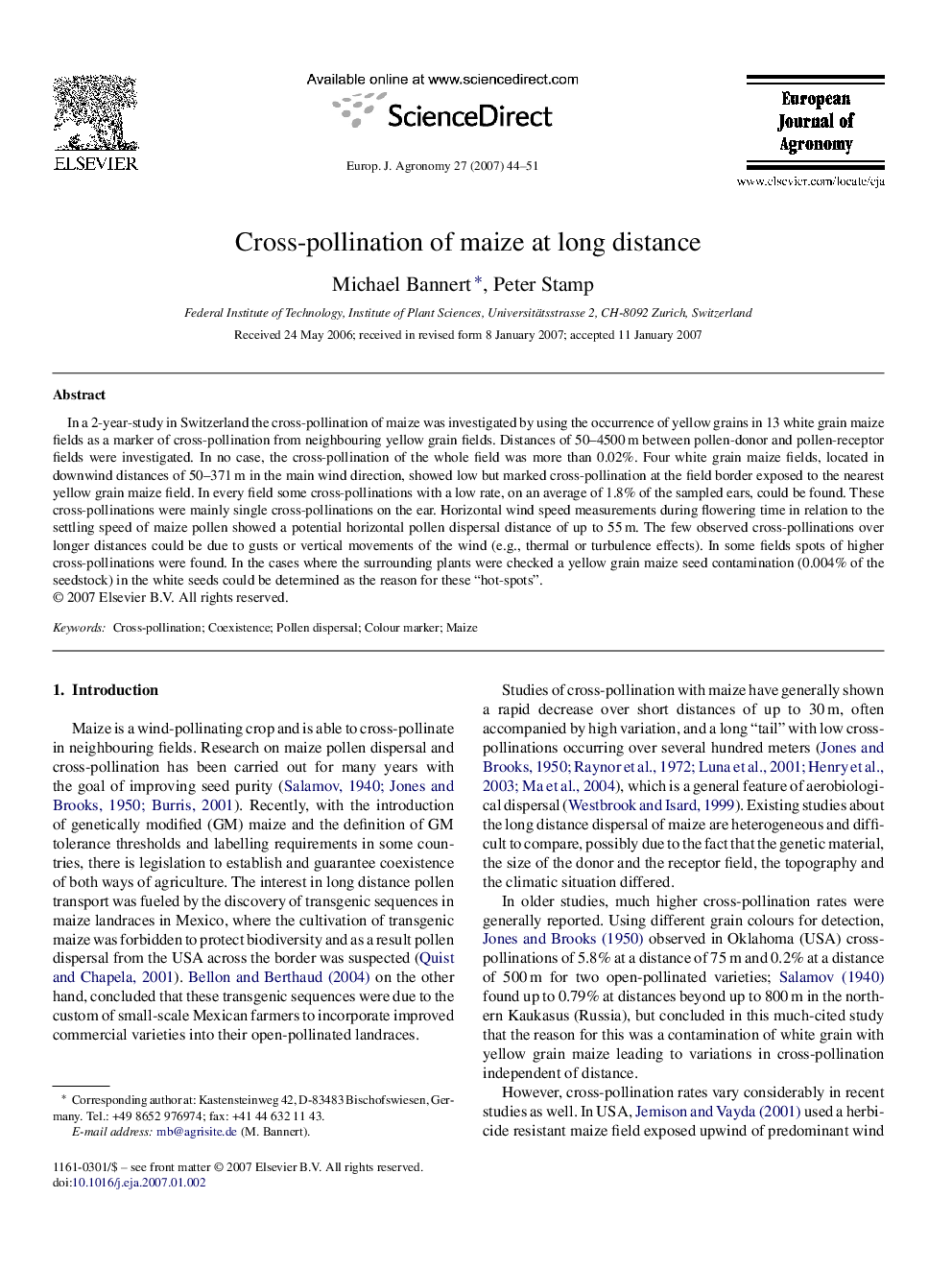| Article ID | Journal | Published Year | Pages | File Type |
|---|---|---|---|---|
| 4509573 | European Journal of Agronomy | 2007 | 8 Pages |
In a 2-year-study in Switzerland the cross-pollination of maize was investigated by using the occurrence of yellow grains in 13 white grain maize fields as a marker of cross-pollination from neighbouring yellow grain fields. Distances of 50–4500 m between pollen-donor and pollen-receptor fields were investigated. In no case, the cross-pollination of the whole field was more than 0.02%. Four white grain maize fields, located in downwind distances of 50–371 m in the main wind direction, showed low but marked cross-pollination at the field border exposed to the nearest yellow grain maize field. In every field some cross-pollinations with a low rate, on an average of 1.8% of the sampled ears, could be found. These cross-pollinations were mainly single cross-pollinations on the ear. Horizontal wind speed measurements during flowering time in relation to the settling speed of maize pollen showed a potential horizontal pollen dispersal distance of up to 55 m. The few observed cross-pollinations over longer distances could be due to gusts or vertical movements of the wind (e.g., thermal or turbulence effects). In some fields spots of higher cross-pollinations were found. In the cases where the surrounding plants were checked a yellow grain maize seed contamination (0.004% of the seedstock) in the white seeds could be determined as the reason for these “hot-spots”.
